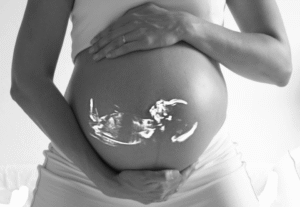Introduction-
Parkinsons is a common neurodegenerative disorder. The diagnosis of PD is clinical. It is important to recognize the early symptoms and signs suggestive of parkinsonism.
Pathology-
The pathological hallmark of parkinsons is cell loss within the substantia nigra. The earliest changes occur in the medulla oblongata/pontine tegmentum and olfactory bulb. In these early stages, however, patients are pre-symptomatic. As the disease advances, areas of the midbrain and basal forebrain and finally the neo-cortex become involved.
Lewy bodies are the pathological hallmark of PD. They are made up of multiple proteins together and are therefore responsible for proteolysis. These also include ubiquitin,which is a heat shock protein and it plays an important role in targeting other proteins for breakdown.
Mutations are also responsible for some familial forms of PD.
Environmental factors-
A few environmental factors that predispose to the development of PD-
- Exposure to pesticide use
- wood preservatives
- exposure to environmental toxins.
Symptoms-
The main clinical features of PD are bradykinesia, rigidity and rest tremor. However, not all of these may be present. Postural instability may also be involved in a few cases. There are a number of other clinical signs such as A change of handwriting with micrographia, reduced facial expression, A loss of arm swing on one side and gait disturbances.
As the disease becomes more advanced, hypophonia, drooling of saliva and impairment of postural reflexes may also develop.

Diagnosis-
Diagnosis of a parkinsonian syndrome-
- Bradykinesia along with at least one of the following-
- muscular rigidity
- rest tremor and
- postural instability
Supportive criteria for PD-
Three or more of the following is required for diagnosis of definite PD
- Unilateral onset
- Rest tremor present
- Progressive disorder
- Persistent asymmetry
- Excellent response to levodopa
- Severe levodopa-induced chorea
- Levodopa response for 5 years or more
- Clinical course of 10 years or more
Non motor complications-
- Sleep issues- Sleep disorders are frequent in PD. There is disturbed nocturnal sleep and excessive daytime somnolence. sleep disturbance occurs in 60–98% of patients and correlates with disease severity. Daytime sleep events are also more common
- Cognition in PD- Many patients with PD develop dementia, typically about 10 years or more after the onset of motor symptoms.
- Mood disturbance and PD- Depression is the most common mood disturbance occurring at any stage of the illness. Fluctuations are commoner in more advanced stage of disease.
- Psychosis and confusion – Psychosis can occur in up to 30% of PD patients. It often presents with hallucinations, agitation or also sometimes aggression. Psychosis is also possibly mediated by loss of dopaminergic neurones.
Conclusion-
PD is a common neurodegenerative illness. A combination of genetic and also environmental factors is responsible for producing abnormal protein aggregation. This leads to cell dysfunction and then cell death. The diagnosis remains a clinical one and it is thus important to exclude other causes of parkinsonism. A large number of pharmacological agents with surgical interventions can help treat complications of PD.Also, Physiotherapy plays an important role to manage symptoms, retrain balance, develop strength and improve posture.
Also read- https://vcurehealthcare.com/understanding-the-cycle-of-menopause/





